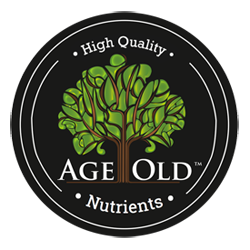Community Supported Agriculture: Back to Basics
Over the last 10-15 years, there has been a growing movement among a portion of the United States population for locally grown, sustainably-sourced produce. For perhaps the first time in almost a hundred years, there is a strong desire to know not only where our food is grown but more importantly- how. The rise of organic agriculture and the demand for foods grown without the use of chemical pesticides, herbicides, and antibiotics are direct manifestations of this movement.
The momentum can be seen in the growing popularity of local farmers markets, the farm-to-table restaurant movement, and retail grocery stores geared towards organic and sustainably grown foods. Another method of locally-sourced food production that most people may not be as familiar with is Community Supported Agriculture (CSA), and it is becoming more popular with each passing year.
What is a CSA?
The basic concept of a CSA is that the farmer offers up a designated amount of “shares” of the farm to the public. Each customer that purchases a share at the beginning of the year, often referred to as a subscription, will receive a weekly allotment of the harvest. The weekly offering typically consists of a box of vegetables, but other products from the farm may also be included. The weekly boxes are picked up at a designated location, and in some cases, even delivered to the shareholders home. The fresh, locally grown produce comprising the boxes will vary depending on what is in season and ready for harvest as the year progresses.
Farmers that grow for CSAs also tend to practice organic farming techniques. The weekly boxes offered through CSAs typically have enough produce to sustain a family of four for over a week. Even though the money for the share is paid upfront before the season starts, the price is usually quite fair and most often averages out to less than $20.00 a week.
The CSA farming model is relatively new in the United States with the first ones popping up in the state of Massachusetts in the mid-1980s. By the year 1990, the number rose to 60 farms in the U.S. In the early 2000s, the popularity of CSAs grew significantly. The government does not officially keep track of how many farms operate under the CSA structure, but both university and independent surveys estimate that the number is well over 4,000. As the popularity of locally-sourced, farm-to-table food production continues to spread, the number of farms operating under the CSA model will also increase.
The CSA Connection
A major key to CSAs is the focus on being a true community-based system. It is through this emphasis on community that important connections are made. The consumer can connect and build a relationship with the farmer, in turn providing a deeper connection to the food they eat. On the other hand, the farmer is able to meet and know the people that quite literally eat their food to survive. This type of connection can have a meaningful impact on a farmer and often results in them taking even more pride in their job. It is a weekly reminder that what they are doing is of immense importance to our world.
The connection between farmer and consumer is not the only noteworthy benefit provided by the CSA model. On the farmer’s side, it offers the much-needed cash flow before the season even begins. By selling shares of the harvest before the season starts the farmer is able to buy needed supplies without relying on sizable bank loans. Money for items such as seeds, farm equipment, and even the farmer’s pay can come directly from the sale of shares. There is also the benefit of knowing exactly where the harvest will go without having to find a private buyer or relying on current market trends. Since most CSA farms provide organic produce, the farmer is also able to put a premium price on the goods, which helps make the farm more prosperous.
Shareholders not only get the benefit of knowing who is growing their food but also where and how it is produced. Through a closer relationship with the farmer, they are able to learn which types of pest control measures or products are implemented (if any) and which types of fertilizers are used in the process. Many CSAs will even offer “farm days.” These are special days dedicated to allowing the shareholder to visit the farm and build an even deeper connection with their food source. But perhaps the best benefit to a shareholder of a CSA farm is the fact that throughout the season they receive a variety of extremely fresh produce that has better flavor and nutrient content than what can be purchased at a grocery store.
The Risks of the CSA Model
Another aspect that is inherent in the CSA model is the idea of “shared risk.” This is important for any community-based system and is what sets CSAs apart from other forms of local agriculture. The shared risk portion of the agreement creates a “we’re in this together” mentality between shareholders and the farmer. And believe me, there are plenty of risks to take into consideration.
With each season there exists the possibility of a diminished harvest due to attacks by pests and disease, unfavorable weather such as hail, wind, and drought, or even just too much rain. Face it, numerous things can go wrong and cause a bad year on the farm. A difficult farming year can lead to smaller harvests and the possibility of shareholders not getting as much of a return on the initial investment. For the most part, there are no refunds in the CSA model. Most shareholders simply shake off the bad years and remember that the next year might be the best year the farm has ever had.
That is simply the risk that the shareholder takes when becoming part of a CSA agreement. The risk to the farmer can be even more substantial. If the farm has a disappointing year and shareholders feel as though they’ve been ripped off, it can result in fewer subscribers the following year. If bad years persist, it can even lead to the death of the farm’s CSA program. The risks are very real for all parties involved but longtime members of a CSA program will most likely tell you that the good years far outweigh the bad.
If the idea of shared risk and the possibility of not getting your “money’s worth” makes you anxious than the CSA model may not be for you. In this case, a local farmers market would be the better choice.
Know Where Your Food Is Grown
At the end of the day, I feel that the true underlying importance of the CSA model can be seen by looking at it for what it represents as an overall idea. In the end, it all stems from the growing desire of everyday people to know how and where their food is grown. This same driving force is responsible for the rise in popularity in everything from farmers markets to retail stores specializing in natural and organically grown foods. These are all individual components of the same message. A portion of the public feels that it is our right to know what kind of chemicals and toxins are being used in the daily production of our food and that the consumer should have healthier alternatives to choose from. This portion of society is growing larger by the day. The market for local, sustainably-grown food has been and is still growing. As long as consumers continue spending their hard-earned money on these sorts of food production methods, then there is no reason for this trend to change.


